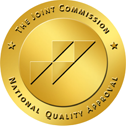Over 17 million adults in the United States can be classified as alcoholics or as having a problem with alcohol, but of these, less than 8 percent receive the help they need via alcohol rehabilitation. That’s a sad statistic considering rehabilitation through alcohol addiction treatment is the only way the majority of people will be able to win the battle against their disease. Other alcohol rehabilitation statistics are equally as disturbing.
Alcohol Addiction Statistics
* Over 20% of current drinkers report binge drinking (consuming more than five drinks in a single time period) at least once over the past year.
* About 7 million Americans between the ages of 12 and 20 are binge drinkers.
* More than 43 percent of Americans have one or more family members struggling with alcoholism.
* Three million people over the age of 60 abuse alcohol in the United States.
* Forty percent of alcoholism is caused by genetic reasons.
Alcohol Health Risks Statistics
* In 2006, over 22,000 people died from alcohol-induced deaths and over 11,000 died from alcohol liver disease.
* A 2006 survey found that 19 percent of women drank during their first trimester of pregnancy and 8 percent engaged in binge drinking behavior.
* Half of all driving fatalities involve alcohol.
* About 20,600 deaths are caused by alcohol in the United States every year.
Alcohol Rehabilitation Statistics
* Over 40 percent of people admitted to treatment facilities are admitted for treatment of alcoholism or alcohol abuse. Of these, 21.9 percent are admitted solely for alcohol treatment and 17.8 percent are admitted for treatment of alcoholism and another drug addiction.
* The most common excuses for not seeking alcohol rehab treatment are: “I don’t feel ready to stop drinking” (42%) and “I can’t afford treatment” (38%).
* According to a 2005 report, 24 percent of patients drop out alcohol rehab, 24 percent are terminated or failed to finish treatment, and 44% of patients successfully completed treatment.
* A 2006 report found that 49 percent of people admitted to alcohol-only treatment program were admitted by themselves, a family member or a friend. Fifty-five percent were admitted by the criminal justice system.
Getting Help for Alcoholism
Admitting you have a problem with alcohol takes an enormous amount of strength and courage, and is the first step to recovery. The second step is getting help for your addiction through treatment at an alcohol rehabilitation facility.
There are many different types of alcohol rehabs, including residential treatment, out-patient care, detox and sober living. Most rehabs follow the 12-step model in addition to various treatments such as cognitive behavioral therapy, dual-diagnosis therapy and holistic therapy. With literally thousands of alcohol rehabs to choose from, the decision can be hard, but you should base your decision on which types of treatment they offer, staff credentials and if they offer aftercare programs to prevent and address relapse. A good alcohol rehabilitation facility will evaluate your needs on an individual basis and create a program that’s tailored to your specific needs.




